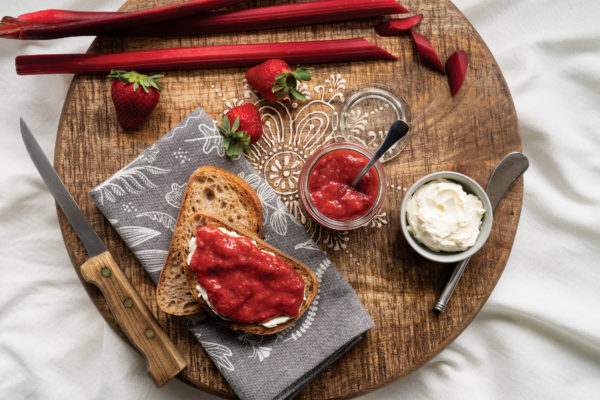Collagen is the most abundant protein in your body and a major player in supporting overall health. Supplementing with it may help enhance skin’s elasticity, diminish bone loss, and ease joint pain. Finding ways to incorporate more collagen into your diet, especially as you age, is one possible way to keep feeling good.
Collagen supplements have been broken down (or hydrolyzed) into small amino acid chains called “peptides” with the aim of aiding absorption. This hydrolyzed collagen is a great option to cook and bake with. It is thought to be heat stable, and it won’t gel when combined with liquid, making it easy to incorporate into recipes like this one—and many of your favorite dishes—without drastically changing the food’s texture.
Whether you use it on toast paired with nut butter, drizzled on pancakes, dolloped on oatmeal, or stirred into yogurt, the possibilities are endless for this fruity and functional condiment.

- In medium saucepan, stir together strawberries, rhubarb, lemon juice, and maple syrup over medium heat. Let mixture come to a simmer, stirring occasionally.
- Once at a good simmer, let jam cook for 15 to 25 minutes, stirring frequently.
- About halfway through cooking, break up fruit with fork or potato masher.
- Once jam has finished cooking, turn off heat and gradually whisk in collagen.
- Transfer to heatproof container and let cool to room temperature.
- Once cooled, cover and refrigerate for up to 1 week.
Tip
Try stirring a dash of freshly ground black pepper into the jam along with the collagen. The pepper adds a pleasant heat to the jam and makes it perfect for serving with your favorite cheeses.
Per 2 Tbsp serving: 26 calories; 1 g protein; 0 g total fat (0 g sat. fat); 5 g total carbohydrates (4 g sugars, 1 g fiber); 8 mg sodium